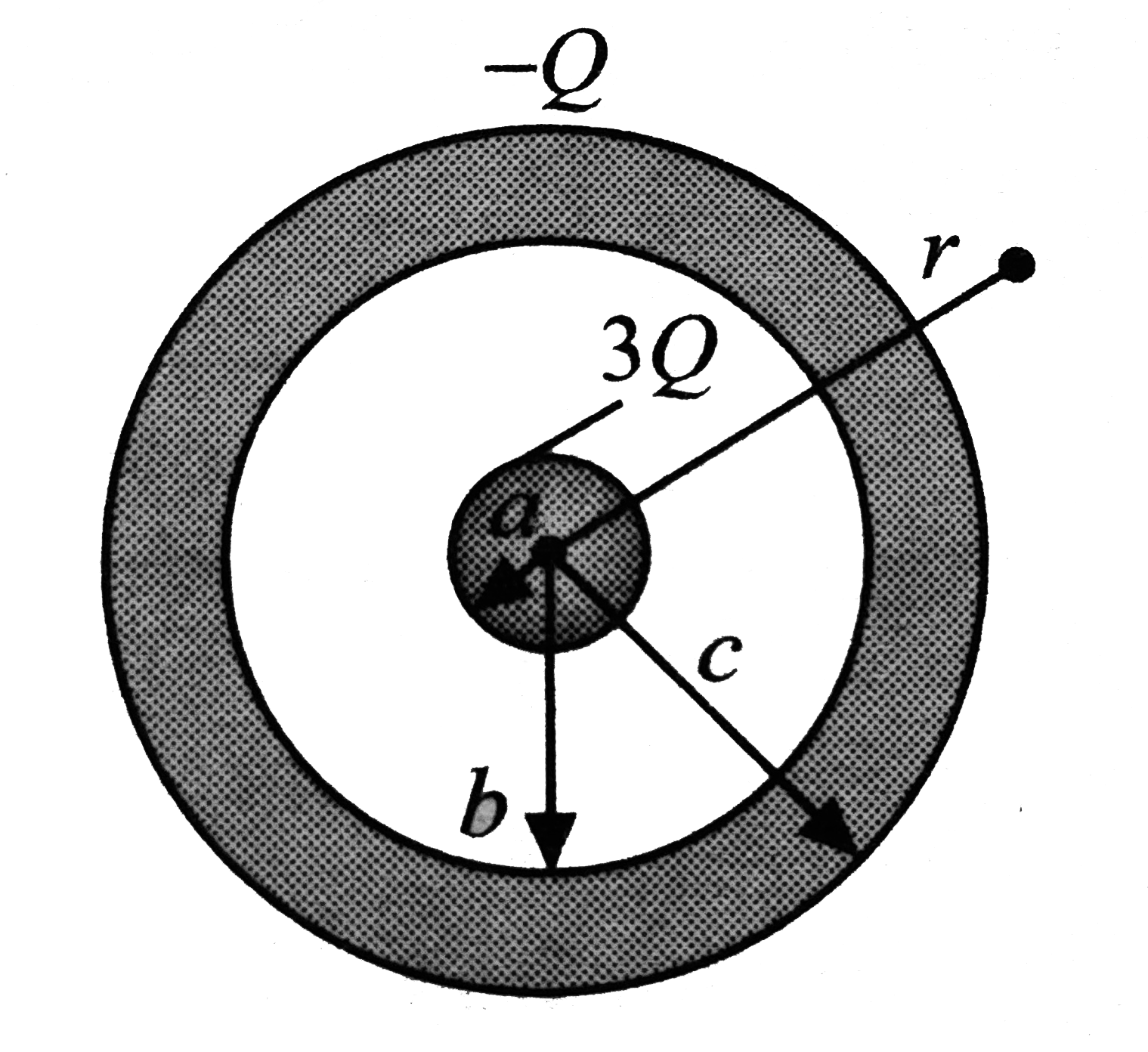If the total charge enclosed by a surface is zero, does it imply that the electric field everywhere on the surface is zero ? Conversely, if the electric field everywhere on a surface is zero, does it imply that net charge inside is zero.
Gauss' law also implices that when the surface is so chosen that there are some charges inside and some outside.
the flux is such situation is given by ∮E.dS=qε0
In such situations, the electric field in the LHS is due to all the cahrges both inside and outside the surface. the term q on the right side of the equation given by gauss' law represent only the total charge inside the surface.
Thus, despite being total cahrge enclosed by a surface zero, it doesn't imply that the electric field everywhere on the surface is zero, the field may be normal to the surface. Also, conversely if teh electric field everywhere on a surface is zero, it doesn't imply that net charge inside it is zero.
i.e., putting E=0 in ∮E.dS=qwε0
we get q=0.
Topper's Solved these Questions
- ELECTRIC CHARGES AND FIELDBOOK - NCERT EXEMPLAR ENGLISHCHAPTER - ELECTRIC CHARGES AND FIELDEXERCISE - Short Answer Type question
6 Videos
- ELECTRIC CHARGES AND FIELDBOOK - NCERT EXEMPLAR ENGLISHCHAPTER - ELECTRIC CHARGES AND FIELDEXERCISE - Long Answer Type Question
6 Videos
- ELECTRIC CHARGES AND FIELDBOOK - NCERT EXEMPLAR ENGLISHCHAPTER - ELECTRIC CHARGES AND FIELDEXERCISE - MCQ s (More than One Options)
6 Videos
- DUAL NATURE OF RADIATION AND MATTERBOOK - NCERT EXEMPLAR ENGLISHCHAPTER - DUAL NATURE OF RADIATION AND MATTEREXERCISE - LONG ANSWER TYPE QUESTION
5 Videos
- ELECTROMAGNETIC INDUCTION BOOK - NCERT EXEMPLAR ENGLISHCHAPTER - ELECTROMAGNETIC INDUCTION EXERCISE - Long
11 Videos
Similar Questions
If the flux of the electric field through a closed surface is zero,
View SolutionIf the flux of the electric field through a closed surface is zero ,
(i) the electric field must be zero everywhere on the surface
(ii) the electric field may be zero everywhere on the surface
(iii) the charge inside the surface must be zero
(iv) the charge in the vicinity of the surface must be zero
View SolutionThe net charge in a current carrying wire is zero. Them, why does a magnetic field exert a force on it?
View SolutionThe position of the point where the net electric field will be zero is

View SolutionThe acceleration of the charge on the gap faces will cease when the total electric field within the ring becomes zero. For this to happen, the electric field E0 in the gap is
View SolutionThe magnitude of the electric field on the surface of a sphere of radius r having a uniform surface charge density σ is
View SolutionThe electric field near a conducting surface having a uniform surface charge denstiy σ is given by
View SolutionThe electric field inside a hollow charged conductor is zero. Is this true or false ?
View SolutionThe electric field inside a spherical shell of uniform surface charge density is
View SolutionA solid insulating sphere of radius a carries a net positive charge 3Q, uniformly distributed throughout its volume. Concentric with this sphere is a conducting spherical shell with inner radius b and outer radius c and having a net charge -Q, as shown in figure

a. Consider a spherical Gaussian surface of radius rgtc, the net charge enclosed by this surface is .............
b. The direction of the electric field rgtc is .............
c. The electric field at rgtc is ............... .
d. The electric field in the region with radius r, which cgtrgtb, is ...............
e. Consider a spherical Gaussian surface of radius r, where c>r>b, the net charge enclosed by this surface is ................ .
f. Consider a spherical Gaussian surface of radius r, whereb>r>a, the net charge enclosed by this surface is ................. .
g. The electric field in the region b>r>a is ................ .
h. Consider a spherical Gaussian surface of radius r<a. Find an expression for the net charge Q(r) enclosed by this surface as a function of r. Note that the charge inside the surface is less than 3Q.
i. The electric field in the region r<a is ................. .
j. The charge on the inner surface of the conducting shell is .......... .
k. The charge on the outer surface of the conducting shell is .............. .
l. Make a plot of the magnitude of the electric field versus r.
View Solution
